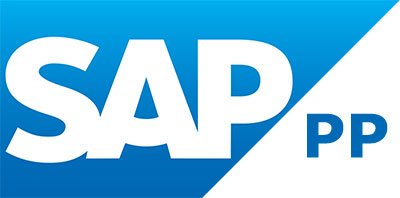
- Q: What is SAP PP, and what are its main functionalities?
A: SAP PP stands for Production Planning and is a module within SAP ERP. It encompasses various functions related to production planning and control, such as material requirements planning, master production scheduling, capacity planning, and shop floor control. - Q: What is the purpose of the Bill of Materials (BOM) in SAP PP?
A: The Bill of Materials (BOM) in SAP PP is a structured list that outlines the components and raw materials required to manufacture a finished product. It serves as a foundation for material requirements planning and facilitates the calculation of material consumption for production orders. - Q: What is a Work Center in SAP PP?
A: In SAP PP, a Work Center refers to a specific physical or logical location where production activities take place. It contains essential information about machinery, labor, tools, and other resources necessary for carrying out production operations. - Q: What is the difference between Routing and Recipe in SAP PP?
A: Routing in SAP PP defines the sequence of operations and the corresponding work centers involved in producing a particular product. On the other hand, Recipe is utilized in process industries and specifies the formula, ingredients, and process steps required for manufacturing a product. - Q: What is the purpose of the Production Planning table (PLAF) in SAP PP?
A: The Production Planning table (PLAF) is a significant component in SAP PP that stores vital information related to planned orders, production orders, and process orders. It contains relevant data such as order type, material, quantity, and other relevant details. - Q: How do you handle capacity planning in SAP PP?
A: Capacity planning in SAP PP involves assessing available resources like work centers and labor and comparing them with production requirements. This evaluation helps identify potential bottlenecks and optimize production schedules accordingly. - Q: Explain the concept of Material Requirements Planning (MRP) in SAP PP.
A: Material Requirements Planning (MRP) in SAP PP is a method used to determine the quantity and timing of materials needed for production. It takes into account factors such as sales orders, forecasts, stock levels, and lead times to generate a procurement or production schedule. - Q: How do you execute Material Requirements Planning (MRP) in SAP PP?
A: In SAP PP, Material Requirements Planning (MRP) can be executed through transaction codes like MD01 (Single-Item Planning) or MD50 (Multi-Level Planning). These transactions consider demand, supply, and planning parameters to generate procurement proposals and production orders. - Q: What is the difference between Planned Order and Production Order in SAP PP?
A: In SAP PP, a Planned Order represents a proposed procurement or production request based on the output of the MRP run. It serves as a future demand indication. Conversely, a Production Order is a confirmed order used for the actual execution of production activities. - Q: How do you monitor and control production activities in SAP PP?
A: SAP PP offers several tools to monitor and control production activities, including Production Orders, Order Confirmations, and Goods Movements. These tools aid in tracking progress, recording actual quantities produced, and updating inventory levels. - Q: What is Backflushing, and how is it used in SAP PP?
A: Backflushing is an automated process in SAP PP that involves the automatic withdrawal of goods from inventory and the confirmation of production activities based on predefined rules. This eliminates the need for manual goods movements and saves time during order confirmations. - Q: Explain the concept of Capacity Overload in SAP PP.
A: Capacity Overload occurs in SAP PP when the demand for production exceeds the available capacity of work centers, machines, or labor resources. Managing capacity overload involves analyzing production schedules, adjusting capacities, or redistributing workload to overcome bottlenecks. - Q: How do you handle Variant Configuration in SAP PP?
A: Variant Configuration in SAP PP enables the creation of configurable products with different options and variants. It involves defining characteristics, values, dependencies, and rules to manage the selection and validation of product variants. - Q: What is the purpose of the Production Planning Dashboard in SAP PP?
A: The Production Planning Dashboard in SAP PP provides a visual representation of key performance indicators (KPIs) and metrics related to production planning and control. It assists in real-time monitoring and analysis of production processes. - Q: Can you explain the integration of SAP PP with other modules in SAP ERP?
A: SAP PP integrates with various other modules within SAP ERP, such as Sales and Distribution (SD), Materials Management (MM), Quality Management (QM), and Controlling (CO). This integration ensures seamless information flow between different functional areas, optimizing production processes.




